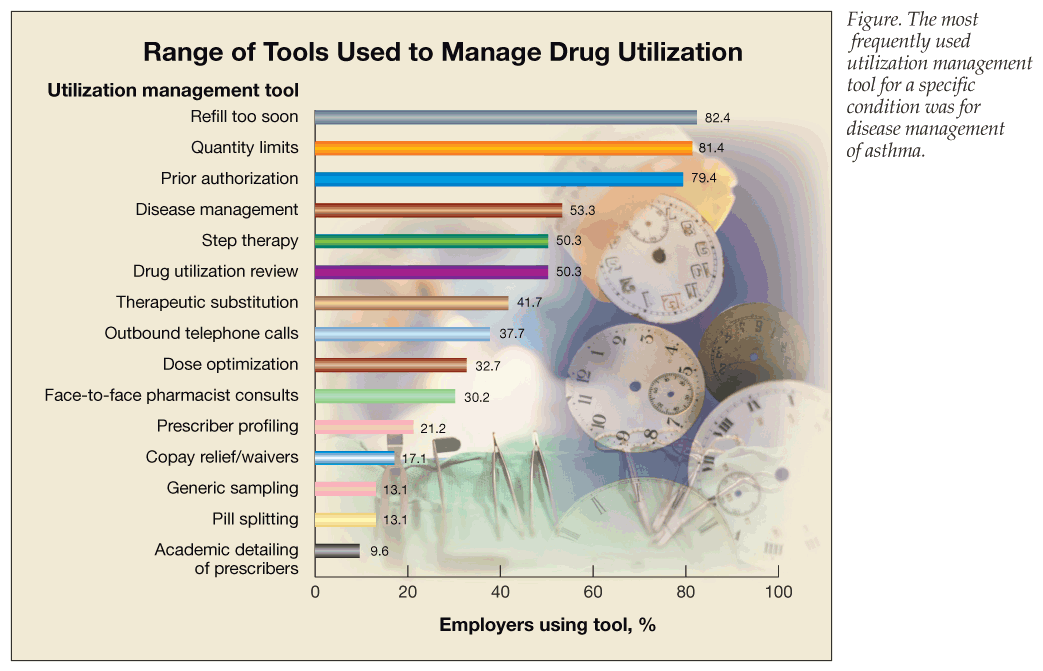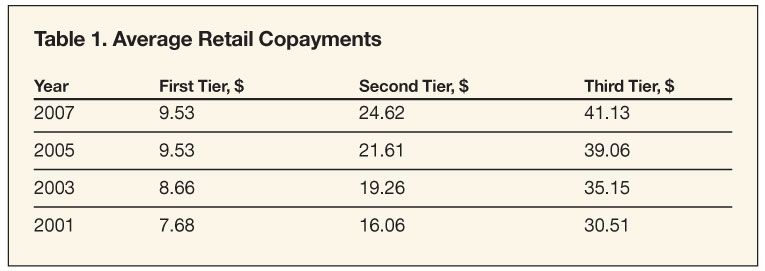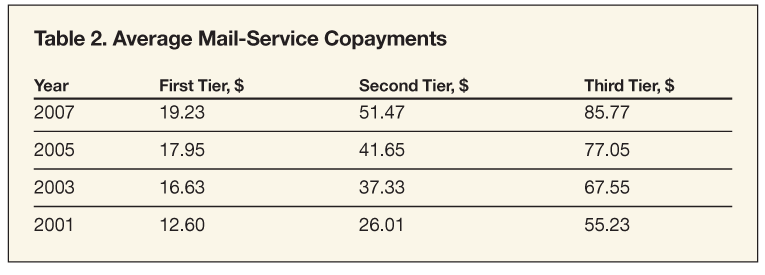- Clinical Technology
- Adult Immunization
- Hepatology
- Pediatric Immunization
- Screening
- Psychiatry
- Allergy
- Women's Health
- Cardiology
- Pediatrics
- Dermatology
- Endocrinology
- Pain Management
- Gastroenterology
- Infectious Disease
- Obesity Medicine
- Rheumatology
- Nephrology
- Neurology
- Pulmonology
Generic Drug Use Reaches New Heights
Generic drug utilization has reached its highest levels to date-60.4% for retail prescriptions and 49.3% for mail-service prescriptions (Cover Figure), while pharmacy reimbursement continues its downward trend.

Generic drug utilization has reached its highest levels to date-60.4% for retail prescriptions and 49.3% for mail-service prescriptions (Cover Figure), while pharmacy reimbursement continues its downward trend.
Findings are from the Takeda Prescription Drug Benefit Cost and Plan Design Report, 2008-2009 edition, based on a survey of employers conducted by the Pharmacy Benefit Management Institute (PBMI), and sponsored by Takeda Pharmaceuticals North America. Completed survey forms were received from 223 employers from a range of industries providing coverage for more than 15 million health plan members. The study has been conducted annually by PBMI since 1995.
Generic dispensing rates for retail and mail-service prescriptions have climbed steadily. Rates are consistently lower for mail service because many of the medications dispensed most often by mail are not yet available generically.
Pharmacy reimbursement continues to decline, particularly for mail service, following a 10-plus-year downward trend. Pharmacy reimbursement consists of 2 elements: average wholesale price (AWP) for the drug ingredient and a dispensing fee. Average retail brand reimbursement was a 16.1% discount off AWP plus a dispensing fee of $1.73, versus 16.1% and $1.88 in 2007. Average mail-service reimbursement for brand-name drugs was a 23% discount off AWP plus $2.17, a drop of 2.5% since 2007. In 2004, pharmacy reimbursement was 14.8% off AWP plus $1.95 for prescriptions dispensed via retail and 21% off AWP plus $0.41 for mail-service prescriptions.

More than two-thirds (68.4%) of employer plans use a 3-tier benefit design with dollar amount copayments, up from 56.4% in 2007. Tiered copayments provide a financial incentive for plan members to choose generic drugs. Average copayment amounts have risen steadily for retail (Table 1), with the exception of first-tier generics, and for mail service (Table 2). Historically, employers created incentives for members to choose mail service but found this did not produce savings. Average mail-service copayments are now slightly more than 2 times the average retail copayments for generics, preferred brands, and nonpreferred brands.

On average, plan members paid 26.6% of the cost of a retail prescription and 19% of a mail-delivered prescription. This was little changed from 27% for a retail prescription and 19% of a mail-service prescription in the 2006 survey.
Nearly all employers (93.7%) offer mail service for maintenance medications. However, only 12.4% of employers require that refills of maintenance medications be dispensed by a mail-service pharmacy, down from 20% in 2005. Less than a third of employers (31.4%) dispense maintenance medications through retail pharmacies.
To rein in costs, employers are using a range of utilization management tactics (Figure) that in some cases vary by disease. Overall, the tactics used most frequently are edits for requesting a refill too soon (82.4%), quantity limits (81.4%), and prior authorization (79.4%). Although academic detailing of prescribers is used by only 9.6% of employers for all diseases, the approach is more frequently used to influence medication choices for specific common conditions, including hypertension (52.6% of employers), diabetes (47.4%), high cholesterol (42.1%), asthma (42.1%), and depression (36.8%). Disease management, while used for all conditions by 53.5% of employers, is more widely used by employers for diabetes (74.5%) and asthma (63.2%).
Nearly three-quarters of employers (73.9%) offer a specialty pharmacy benefit. Employers commonly exclude coverage for the following: investigational drugs (96.5%), hair growth treatment (95%), OTC drugs (75.5%), weight loss/gain medications (71%), infertility treatments (56.5%), Retin A (52%), growth hormones (50%), and smoking cessation medications (49%).
More than three-quarters of employers (84%) receive rebates from pharmaceutical manufacturers. Average dollar amounts range from $3.02 to $19.22 per script. Just over half of employers (52.3%) perceive the financial relationship with their PBM to be transparent, a modest increase over 2007. However, 13.1% of employers do not know if their PBM financial relationship is transparent.
Data for the Cover Figure and in “Trend of the Month” are from the Takeda Prescription Drug Benefit Cost and Plan Design Report, 2008-2009 edition. The full report is available at http://www.pbmi.com, the Web site of the Pharmacy Benefit Management Institute, Inc.
